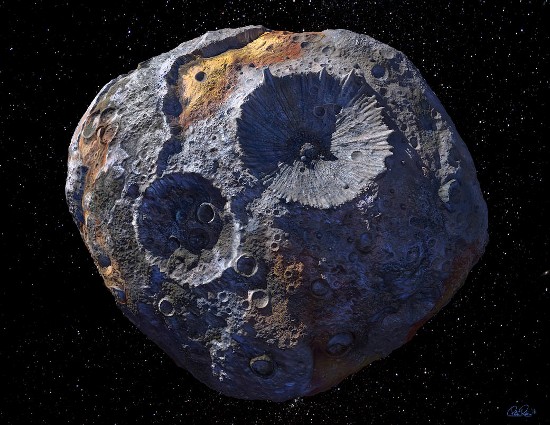Two companies have gone down the space mining path in the previous decade proclaiming missions to mine asteroids for their wealth. Planetary Resources was to go out and find water among the Asteroid Belt and harvest it for hydrogen for space propulsion and oxygen for habitats. Deep Space Industries wanted to harvest the metals found in asteroids worth billions of dollars for Earth and near-Earth-based use. Both received initial venture capital and funding, and both today are nowhere near achieving their goals. In fact, the two companies are either moribund or have been acquired by larger concerns.
Now a third commercial endeavour out of California, AstroForge, is entering the hunt to mine and harvest space resources. Its target is asteroids rich in platinum. Is this fanciful or realizable?
Japan’s JAXA and NASA have already launched missions to asteroids and have taken samples from their surfaces. These were scientific missions, not commercial ventures looking to exploit potential mineral resources.
Recently, however, NASA has been inviting commercial companies to get involved with its Artemis Program aimed at returning human crews to the lunar surface. NASA is looking for lunar suppliers who are being asked to mine the Moon for water and other useful materials. NASA wants to do what Planetary Resources planned when it launched its venture back in 2012, but instead of seeking water from asteroids, is looking to get it from the craters at the lunar poles and from elsewhere harvested from subsurface deposits.
The non-commercial use of outer space was originally envisioned in treaties in 1967, 1976 and 1979. Since then, the United States has enacted legislation to exploit space and our nearest neighbour, the Moon, for commercial purposes. European Union countries and China have announced similar initiatives. So there is a different kind of space race than the one that ensued in the 1960s between the Soviet Union and the United States, an ideological battle for near-Earth and lunar space dominance.
What AstroForge Wants to Achieve
In May of last year, AstroForge raised its first $13 million U.S. in seed capital. Its plan is to design small spacecraft that can rideshare with other satellites on rockets like SpaceX’s Falcon 9. The satellites will incorporate mineral refining technology to extract metals like platinum from asteroids and bring them back to Earth.
The first prototype is scheduled for launch this April. It will test onboard technologies designed to vaporize and extract materials from an onboard asteroid-like sample.
If successful, a follow-up mission planned for October 2023 will go on an 8-month mission to an asteroid 35 million kilometres (22 million miles) from Earth. It will do what miners call an assay, determining the constituent minerals contained within the asteroid.
A third mission is planned for later this decade and will target a number of asteroids in the Asteroid Belt between Mars and Jupiter. So far the company has identified eight likely candidates ranging in size from between 20 to 1,500 metres (66 to 4,920 feet) in diameter. Onboard mining and extraction operations will break these target asteroids into smaller pieces, assess the content and then collect minerals of value to be returned to Earth. AstroForge believes the company could earn tens of billions of dollars from this one mission. It will take, however, at least 14 years based on current propulsion technologies but a much shorter period of time if nuclear rocket propulsion systems get perfected between now and the late 2020s projected launch date.
Does AstroForge know with certainty they will find platinum to harvest? It doesn’t and is rather akin to the miners of the Klondike Goldrush era who, with a hope and a prayer, went in search of the motherlode.
NASA To Go To Psyche
NASA has its own plans to check out heavy metal asteroids. Its plans are not to go psycho but rather to visit Psyche, an asteroid orbiting the Sun between Mars and Jupiter.
A few years ago the space agency identified Psyche as one of two metallic asteroids to target. Its composition is 85% nickel, iron and cobalt. It’s not platinum, but the quantity of these valuable minerals exceeds Earth’s known reserves. If mined it could yield minerals worth billions of dollars and could be used to build space infrastructure or projects on Earth.
Why is Psyche so metal-rich? Psyche is likely a core remnant of a protoplanet that during the early bombardment phase in the Solar System’s history was smashed to pieces because of collisions with other space rocks.
The mission has the same namesake as the asteroid it will visit. If launched this year it should arrive at Psyche by 2026 where it will observe and gather data. No sampling or bombardments of the surface are planned, something NASA has done in other asteroid missions.
Psyche’s payload includes an imager, magnetometer, gamma-ray spectrometer and a new laser communication technology that uses light rather than radio waves which should allow for larger data transmission capacity in sending information and images from deep space to Earth receiving stations.








